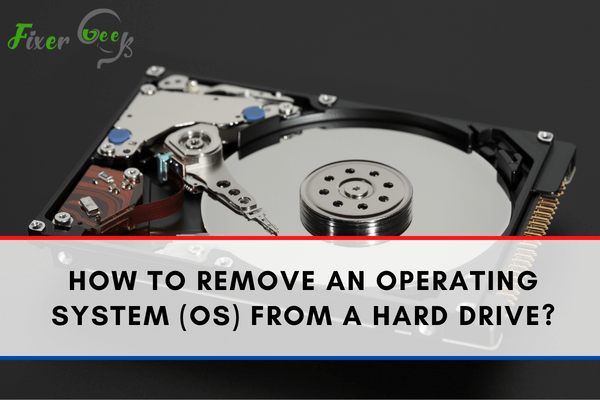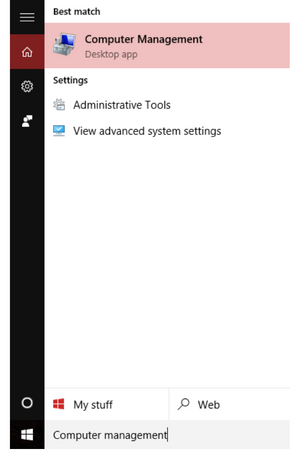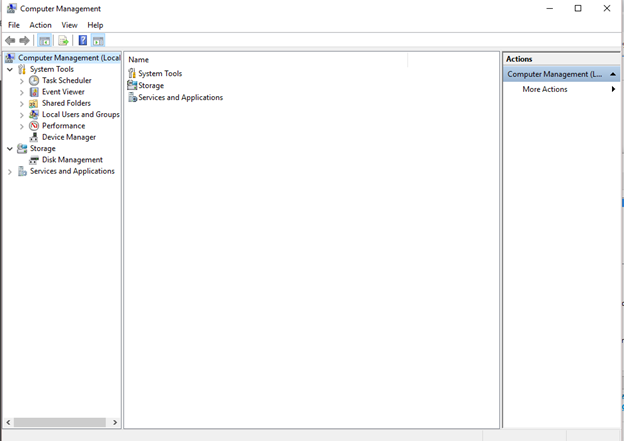A computer won't boot and you have tried everything to get it up and running. You even took it to a computer repair shop and they said there's nothing they can do. But you do have another option - remove the operating system completely. Below is the step-by-step article on how to remove an operating system (OS) from a hard disk drive (HDD).

Do you want to remove your operating system and install a new one? Doing this may come in handy if your device does not require different operating systems. In this article, we will look at how you can get rid of your operating system from a hard drive.
Follow these steps if you want to delete Windows 8, Windows 8.1, Windows 7, Windows 10, and Windows XP from your hard drive.
- First things first, make sure that you back up all your files that are on the operating system you want to remove. This is an important step since deleting the OS from your hard drive will cause you to lose all files associated with it.
- Insert the Windows installation CD into your disk drive. Restart your computer.
- A message may pop up asking if you agree to boot your device to the CD. In this case, hit any key on the keyboard.
- On the screen, press Enter. Next, tap the F8 key on your keyboard to confirm the Windows license agreement.
- Press the ESC key on your keyboard to view the operating systems that are installed on your hard drive.
- After viewing the list of all the operating systems, highlight the partition that you want to delete using the up and down arrows.
- Then, press the D key followed by the L key to confirm that you want to delete the operating system. Usually, the deletion process could take up to 30 minutes. However, this can vary with the amount of data on your hard drive.
How to Remove a Second Operating System from Your Computer?
Usually, a second partition on a hard drive will contain a newer version of Linux or Windows installation. If the second OS takes up useful disc space, then you may want to remove it. Here is how:
- Back up all your files in the second operating system.
- Next, you need to boot to your original operating system.
- Go to your Windows Start menu and input “Computer Management” on the search bar. Locate it from the search results and click on it.

- Once the Computer Management window opens, click on Disk Management on the left pane.

- From the options provided, find the volume that contains the second operating system. In most cases, the primary operating system is contained in the volume labeled C while the second operating system may be contained in the volume labeled D of F.
- Once you have located the volume, right-click on it and select “Delete Volume.” Then, click Yes to confirm and the volume containing your second operating system will be deleted.
- If you want to recover the disc space that was previously used by second operating system, you need to delete the disc partition. To do this, find the drive that held the deleted volume and locate the partition that is labeled as free space. You will notice that this partition is highlighted in a different color.
- Right-click on the partition and click “Delete Partition.” Then, click Yes to confirm.
- To add the free space to your original operating system, right-click on it and then select “Extend volume.” Then, click Next>Next>Finish.

Summary: Remove an Operating System (OS) From a Hard Drive
- Boot into the other operating system.
- Open the Disk Management utility.
- Right-click the partition you want to delete and select Delete Volume.
- Right-click the partition from which you just removed the volume and select Extend Volume.
- Click Next and then Finish to extend the drive.
Conclusion
These are the steps that you should follow if you want to remove your current operating system from your hard drive. Please note that removing the original OS can slow down your computer. Before proceeding with this process, make sure that you backup all your files and paste them to another drive; otherwise you risk losing your data.